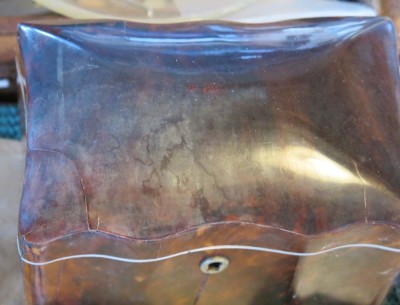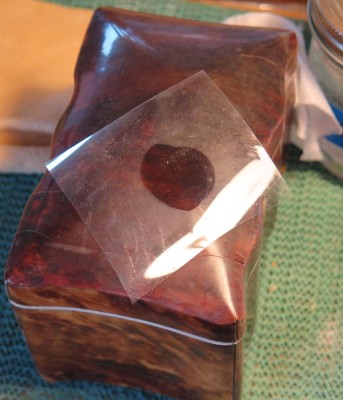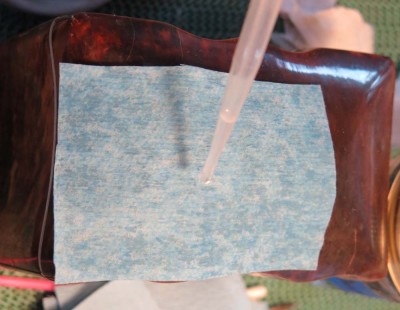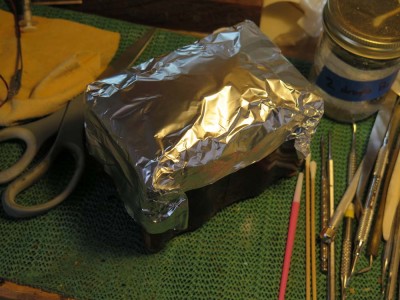Learning Opportunities From Tortoiseshell Contamination
When giving the final polish to the domed lid with the cracks after removing the glue and cloth support on the face, I noticed that the surface underneath that support was badly blanched. It was a startling and sobering development, one that I had never before encountered. So, instead of getting the project done and returned to the owner I am now reflecting on the problem in the hopes that it will be a grand learning opportunity.

I was thunderstruck at the effect, as it was the first time I have ever encountered this. I corresponded with colleagues who have restored tortoiseshell, and none of them had ever seen such a problem. So I set the project aside for a couple of months to think it through. I came to deduce that the blanching is the manifestation of residual oil polish that had been slathered over the surface at some time perhaps long past. The whiteness is the result of the moisture from the aqueous adhesive used in attaching the temporary support on the outside encroaching into the aged and probably partially crosslinked oil that had absorbed into the tortoiseshell.

All that to say that this is a tremendous learning episode for me to solve a problem I had never encountered before. At the moment I am employing rotating poultices of organic solvents to leech out the offending oil residues, and am optimistic about the final outcome.


Stay tuned.


Join the Conversation!